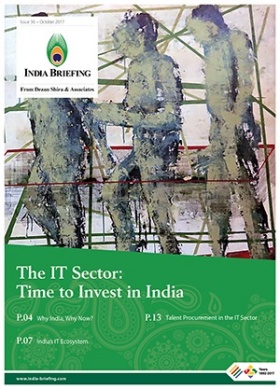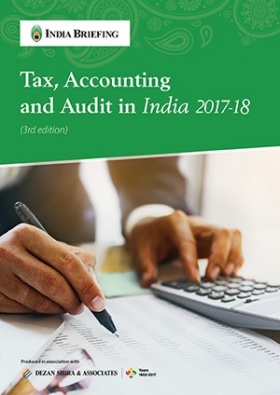India Nervous As Tibetan Military Lockdown Increases Strength
Mar. 9 – India is becoming increasingly concerned as a massive Chinese military presence swarms into Tibet to guard against any civil protests marking the 50th anniversary of the Tibetan uprising and the subsequent fleeing of the Dalai Lama to India.
Border crossings are now closed, and China's significant military presence so close to India is raising speculation in a country already ringed with border security problems and violence in Pakistan, Bangladesh, Burma and Sri Lanka.
The Indian border with Tibet is approximately 2115km long and is guarded on the Indian side by the Indo–Tibetan Border Police. While the ITBP extends its duties to cover the full extent of the Chinese border, a total of 3488km it also works in conjunction with the Indian Army and possesses its own elite commando team, providing security elsewhere in the region for Indian diplomatic personnel, including in Afghanistan and Pakistan.
Government Clears 29 FDI Proposals Worth US$119 million this Week
Mar. 6 – India’s foreign investment promotion board on Wednesday gave the green signal to allow 29 FDI proposals worth Rs 6.16 billion (US$119 million) to be passed. Due to the gloomy global economic scenario, the government has eased FDI entry regulations allowing many more companies entry into the vast Indian market than before.
The largest deal to be passed on Wednesday was hospitality group AAPC Singapore Pte. Ltd.’s proposal of Rs 3.65 billion (US$70.5 million). AAPC plans to set up a wholly owned venture to construct, develop, own and manage low-budget hotels in India. Other sectors that were given FDI clearance included cargo – bulk handling, telecom and retail clothing sectors.
Indian’s in the U.S. Have to Declare Offshore Accounts
Mar. 4 – A new U.S. tax regulation has made it mandatory for non-resident individuals or corporates who have a significant business in the country to disclose their offshore accounts. The internal revenue service says that non-residents need do declare offshore accounts if they exceed US$10,000. This amendment is expected to impact a majority of Indians, who either work, have business interests or whose subsidiaries are registered in the U.S.
This amendment is likely to cover a large population of Indian IT and other professionals working in the US, who will have to file details of their bank accounts henceforth or face penalty. Indian companies doing business in the US would also need to be aware of and comply with this regulation,” partner in Ernst & Young Amitabh Singh told Deepshikha Sikarwar of The Economic Times.
Indians going on work visas like L-1 or H1B and short-term business travelers to the US would be required to declare their bank accounts in India.
India’s Top 10 M&A Deals

Mar. 3 – The all-share merger between Reliance Industries India's largest private sector firm with its subsidiary Reliance Petroleum which created the world's sixth-biggest refiner also marks the country’s 10th largest M&A deal ever.
While 2005-2008 saw large, M&A deals, the past few months have seen a significant plunge in M&A deals in India, even as valuations of Indian companies have become extremely attractive. So far 2009 saw M&A deals worth US$4 billion, less compared to 2008’s M&A deals worth US$30 billion.
Not only has M&A activity fallen, but deal values have also plummeted. During 2005-08, listed Indian companies have been involved in 54 M&A activities worth US$45 billion, but the current mark-to-market value of such M&A’s is down to US$20.96 billion, indicating a loss of 53 per cent, SMC Capital said in a report.
Rupee Falls to Record Low of Rs 51.80 Vs. Dollar
 Mar. 2 – The Indian rupee hit a record low nose-diving to almost Rs 52 against the dollar on Monday due to rising foreign fund outflows. The Indian rupee which has depreciated significantly over the last few months shed 2.7 percent last week and 4.7 percent in 2009. India’s currency fell 19.1 percent in 2008 as foreign fund outflows reached US$13 billion. The rupee is expected to remain low at approximately Rs 52 to the dollar during the next few months.
Mar. 2 – The Indian rupee hit a record low nose-diving to almost Rs 52 against the dollar on Monday due to rising foreign fund outflows. The Indian rupee which has depreciated significantly over the last few months shed 2.7 percent last week and 4.7 percent in 2009. India’s currency fell 19.1 percent in 2008 as foreign fund outflows reached US$13 billion. The rupee is expected to remain low at approximately Rs 52 to the dollar during the next few months.
FDI inflows into India more than halved in the third quarter of this fiscal ending December to US$3.94 billion compared with US$10.07 billion in the quarter ended June 30, Junior Commerce and Industry Minister Ashwani Kumar told the Wall Street Journal.
“There’s a lot of pressure on the rupee as portfolio investments are falling amid the worsening global equity prospects,” Sanjay Arya, Mumbai-based treasurer at state- owned Bank of Maharashtra told Bloomberg. “A rating downgrade by S&P is feared. In addition, the outlook for exports looks quite bleak.”
India Targets US$200 Billion Exports in 2009-10
 Feb. 27 – India’s commerce and Industry minister Kamal Nath has set an export target of US$200 billion during the fiscal year 2009-10. Due to poor economic conditions the government has also lowered this fiscal year’s export target from US$200 billion to US$175 billion. India’s export sector grew 30 percent from January 2008 to September, however in January this year the sector was down 16 percent from the year earlier. Experts estimate the slowdown in exports to continue until March this year.
Feb. 27 – India’s commerce and Industry minister Kamal Nath has set an export target of US$200 billion during the fiscal year 2009-10. Due to poor economic conditions the government has also lowered this fiscal year’s export target from US$200 billion to US$175 billion. India’s export sector grew 30 percent from January 2008 to September, however in January this year the sector was down 16 percent from the year earlier. Experts estimate the slowdown in exports to continue until March this year.
By way of offering exporters 26 additional sops on Thursday, including interest rate subsidies on export loans, enhanced reimbursement of duties, and a longer period to fulfill export obligations etc. the government hopes to decrease the burden on exporters. Nath also said that the most affected industries leather and textile would get a special package of Rs 325 crore (US$64 million) and the threshold limit for recognition as premier trading house would be lowered from Rs 10,000 crore (US$1.9 trillion) to Rs 7,500 crore (US$1.5 trillion).
Ways to Set Up a Company in India

Feb. 19 – Foreign companies looking at a presence in India can set up five different kinds of entities depending on how they want to be represented in India. Companies wishing to maintain their foreign company status can set up a Liaison Office, Project Office or a Branch Office. Those companies that wish to operate as an Indian Company can set up a Wholly-owned Subsidiary or a Joint Venture Company. Due to ease and scope of work allowed most foreign companies decide to open a wholly owned subsidiary. The following enumerates shareholding and scope of work under the specific entities:
Gold Prices Peak in World’s Largest Consumer Market

Feb. 18 – Just ahead of the auspicious wedding season gold prices in India have soared to an all time high topping US$950 an ounce or Rs. 15,000 for 10 grams. India is the world’s largest consumer of the metal and demand usually piques ahead of the wedding season.
Experts believe the high prices can be attributed to several factors. Indians usually buy gold as the safest form of investment. Economists feel that due to the economic crisis Indian banks and financial institutions have been hedging gold which has led to the sky high prices. A weakened Indian rupee and high prices are also believed to have hit demand this year.
“Record prices have seriously hurt demand,” Rajesh Mehta, chairman of Rajesh Exports Ltd., India’s biggest jewelry producer and exporter, told Bloomberg in a telephone interview from Bangalore. “The economic slowdown isn’t helping demand either.”








